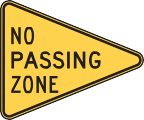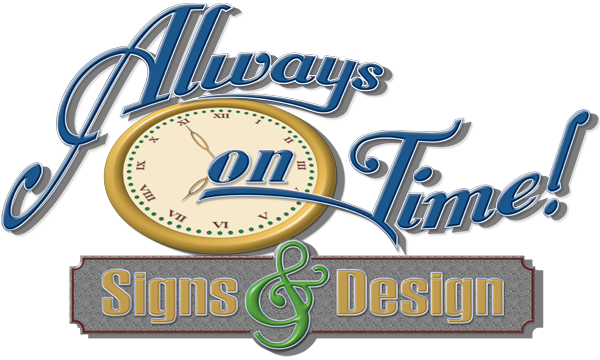
No passing zones are critical to maintaining safe and efficient roadways, especially in areas where passing could lead to accidents due to reduced visibility, sharp turns, or other hazards. No passing zone signs play an essential role in communicating these regulations to drivers, alerting them of areas where overtaking other vehicles is not permitted. But where exactly are these signs located, and why are they placed in particular areas?
Understanding No Passing Zone Signs
A no passing zone sign is a regulatory traffic sign that indicates to drivers that overtaking or passing other vehicles is prohibited. Typically, these signs are represented by the familiar yellow pennant-shaped markers, sometimes accompanied by solid lines on the pavement, which further emphasize the restriction. Explore our traffic signage solutions to understand how these signs are used to ensure road safety.
In addition to improving road safety, no passing zones streamline traffic flow, prevent accidents, and create a smoother driving experience. However, the effectiveness of these signs relies heavily on strategic placement and adherence to certain engineering principles.
Common Locations for No Passing Zone Signs
- Sharp Curves in the Road: These areas have limited visibility, making it difficult to judge when passing is safe. Hence, no passing zones are crucial.
- Steep Inclines or Declines: Visibility is compromised on steep hills, increasing the risk of head-on collisions. Signs are placed to mitigate these dangers.
- Intersections: High-traffic areas like intersections require no passing zones to maintain predictable and safe traffic flow.
- Railroad Crossings: Passing near a railroad crossing is hazardous. No passing zone signs ensure drivers remain cautious and alert.
- Bridges and Tunnels: With narrow lanes and limited sightlines, overtaking in these areas is dangerous, necessitating no passing zones.
Factors That Influence the Placement of No Passing Zone Signs
The placement of no passing zone signs is not arbitrary. Several key factors influence the decision to mark a particular area as a no passing zone, often requiring a detailed analysis from traffic engineers:
Visibility Distance
Traffic engineers consider the line-of-sight visibility distance when determining if a no passing zone is needed. If drivers cannot see a minimum required distance ahead, the area is marked to reduce accident risks. Measurements vary based on the road’s speed limit. Learn more about safety engineering services for optimal sign placement.
Road Width and Lane Configuration
Narrow roads or those lacking a designated passing lane are often marked as no passing zones. Roads with solid yellow lines indicate these restrictions clearly.
Traffic Flow and Volume
High-traffic areas are more likely to have no passing zone signs to prevent congestion and reduce accidents. Proper traffic control is crucial, especially during peak times.
Speed Limits
High-speed roads with limited sightlines require no passing zones to give drivers more time to react. Lower-speed roads may not need such restrictions.
Proximity to Residential and Commercial Areas
No passing zones are often placed near residential or commercial areas with high pedestrian activity. These zones prevent accidents in busy urban environments.
The Role of Technology in Determining No Passing Zones
Today, technology enhances the identification and marking of no passing zones. Traffic engineers use tools like drone mapping and real-time data analysis to ensure road safety:
Drone and Aerial Mapping
Aerial views help assess terrain and visibility, making it easier to determine unsafe areas for passing.
Computer Simulations
Engineers use simulations to model traffic flow and identify where no passing zones are necessary. This data-driven approach ensures accurate placement.
Real-Time Traffic Data and Sensors
Sensors collect data on traffic patterns, helping adjust no passing zones based on conditions. Discover real-time traffic solutions for safer roads.
Regulations Governing No Passing Zone Signs
The Manual on Uniform Traffic Control Devices (MUTCD) governs the placement and design of no passing zone signs, ensuring consistency across states:
Design and Color Requirements
According to the MUTCD, these signs must be pennant-shaped and yellow with black text, making them easily recognizable from a distance.
Pavement Markings
Solid yellow lines accompany these signs, reinforcing the restriction visually and ensuring drivers understand the rules.
State and Local Variations
While federal guidelines exist, states may have additional requirements based on local conditions, such as mountainous terrain or high rainfall areas.
The Importance of No Passing Zones for Road Safety
No passing zones are integral to preventing accidents and maintaining smooth traffic flow. From sharp curves to intersections, these zones are strategically implemented to keep roads safe. Worksafe Traffic Control Industries provides solutions to ensure effective traffic management for municipal, highway, and construction projects.
Worksafe Traffic Control Industries: Your Partner in Traffic Safety
With over twenty-five years of experience, Worksafe Traffic Control Industries offers comprehensive traffic control solutions in New England. Whether you need message signs, arrow boards, or real-time traffic technology, we provide end-to-end services, including design, implementation, and maintenance. Contact us today to learn how we can enhance road safety and efficiency for your next project.

